The Real Problem with Special Needs
We love this TEDx Talk from our friend, Torrie Dunlap, at Kids Included Together on benefits of inclusion and the real “problem” with special needs. 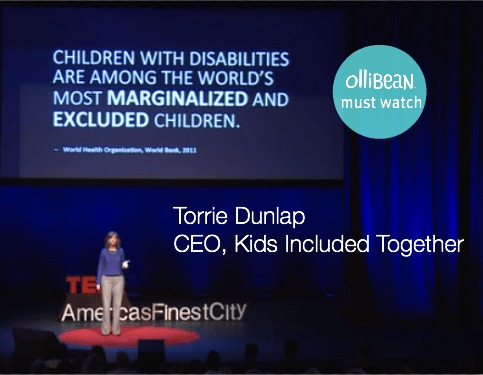
Isn’t it a Pity? The Real Problem with Special Needs
Torrie Dunlap, CEO, Kids Included Together
Feeling Good about Casting Someone with Special Needs in the Show
In the early 90s I was a student on this very campus, and actually, on this very stage. I was a drama major who had a dream to change the world through arts education. The world, however, had something different in mind. In one of my first professional theater jobs I was directing a production of the musical Joseph and the Amazing Technicolor Dreamcoat. I don’t know if you’ve seen it but there are a lot of kids in that show. We held auditions and there was a very lovely middle schooler, with a really pretty voice. She happened to use a wheelchair. I remember casting her in the show and feeling so good about myself for casting someone with special needs in the show. How great for her, and how amazing for the audiences who would see someone using a wheelchair in a production. I spent a lot of time feeling good about myself for this. We had some logistics to figure out, so the production team and I put our heads together and we created a set design with the standard bleacher seating and we made a special cut out for this young girl so she would slide right in with her chair and sit next to the other kids. We hadn’t told her about this and on the day we moved into the theater I could not have been more excited. The theater was old and not very accessible, and so three dads had to hoist the chair with her in it up onto the stage. I proudly showed her the cut out where she would sit in her wheelchair. I will never forget what happened next. She looked up at me and said, “How come I don’t get to sit on the bleachers like the other kids?” And wow. I could not believe how badly I had missed the boat. I was so caught up in the visual and the good feelings I had about doing this that I had not even considered that how she participated was her choice- and I had not even asked her. Without intending to, I had marginalized her. I had turned her from a 7th grader who likes singing and wants to be in a play with her friends into some kind of poster child for disability representation in the arts. I never forgot this experience, and how much I learned that day.
Overcome Our Fears and the Barriers that Separate Children with and without Disabilities
In fact, it informed the rest of my career. After many years of teaching kids with all kinds of differences and abilities I took a leap of faith and became a part-time program coordinator at Kids Included Together, a small grassroots non-profit in San Diego that was teaching child care and after school programs how to meet the needs of all kids. Nine years later I became the CEO and we have now done this work in 45 states and 10 countries and we teach thousands of people each year.
I have learned in my close to 20 years of immersion in this field that we can overcome our fears and the barriers that separate children with and without disabilities by changing our mindset.
In 2011 the World Health Organization and the World Bank published a report on disability. The report states children with disabilities are among the most marginalized children in the world.
I believe that a reason why as a society we have not embraced children with disabilities as full participants in our schools and communities is the limitation of our own mental models around disability. We have moved from hiding and institutionalizing children to a world where kids with disabilities are “special” and receive special services in special settings with special caregivers, and they- and their families- are disenfranchised from the community at large and have become their own separate community. I believe that “special” has become a euphemism for “separate.” When we create a separate, “special” places for children where their “special needs” can be met, we are teaching them that their place is over there, with people like them and not in the full community. When young, impressionable children are taught that their needs are too great, that they are too different and that they don’t fit our very narrow definition of “normal” this has a life long affect on their ability to contribute positively to society. Our goal as adults, parents, teachers and child care providers, is to help kids grow up to be confident, happy adults who make a positive contribution to the world. But, when it comes to kids with disabilities we have missed the boat.
The Medical Model, the Social Model and the Biopsychosocial Model
The disruption that’s needed is in conceptual models of disability. In the field of disability studies they are known as the “medical model” and the “social model.”
The medical model, obviously coming out of the medical community, but with widespread adoption outside of it, views disability as a problem that needs to be cured or fixed. People who have disabilities are perceived as sick and that only experts can determine what treatments are needed. It’s not that cures or medical interventions are necessarily a bad thing, but when we use the medical model as our way of perceiving disability we view children who have them as a problem that need fixing, and we separate them from their peers without disabilities. This is why we often lead with pity- we feel sorry for people who are broken and need fixing and we feel charitable by helping them and this is where we design “special services for special kids.” We feel good that we have done something kind for “those poor children.” We make a lot of assumptions here that children who have disabilities have a poor quality of life, can’t learn and can’t achieve. We assume they need something different than other kids, because they are “special.”
The counterpoint to the Medical Model is the Social Model of Disability.
In this model we view societal barriers as the problem, and not the child. Disability is perceived not as a negative, but as neutral. In this model we view disability as something that exists in the environment and in society, and it is the failure of the environment and not the person. In order to lessen the impact of disability on a person, we need to change the interaction between the person and the environment.
And because this is TEDx and we like big, fancy words I’ll give you one more- this is the model the World Health Organization works from and the one we use in our work at Kids Included Together. It’s called the biopsychosocial model.
This model accepts that medical labels and diagnoses are part of the identity of the person and environmental barriers are also considered when looking at how disability influences a child’s ability to function in the world. It’s a more holistic approach.
You may see your own perspective reflected in one of these models, or you may feel like you have never thought of it before. But, even if we haven’t been confronted with making a conscious choice to adopt a model, we all have one. We create our own mental models to make sense of the world.
A mental model is a deeply engrained set of beliefs based on assumptions, generalizations, media images, our own experience or lack of it. Basically, how we think about stuff. Think of it as your internal personal algorithm. When faced with a decision, before you are even conscious of it, your mental model goes to work. For many of us, our mental model around disability reflects the medical model- something to fear, something to fix, something to feel sorry for, and that we can feel good when we help less fortunate people. But, what happens when we consciously change our internal model and view disability as neutral, and the environment as a factor. What if we see children with disabilities first as children, and not a diagnosis or as “special?”
Here is a very typical community event- it’s a rodeo for “Challenged Buckaroos.” A special rodeo for children with disabilities. The event is designed for children – no special adaptations for disability are needed or offered that I can tell, and the marketing materials say that this is a chance for some “very special kids to meet real cowboys and cowgirls while being cheered on by their fans.” The piece in the newspaper includes a quote from the organizer about how “rodeo fans can give a great day to some great kids.” What do you think? Medical model or social model? What assumptions are we making about children and their disability in an event like this? Why do children who have a disability label need their own special rodeo? What message are we sending to kids when we create a separate rodeo just for them?
What if the rodeo committee held a children’s event and invited all children- regardless of their ability to attend. Picture what a day at the rodeo with all kinds of kids there could look like. They would make sure that children who needed it had extra assistance, but would anything else really have to change? What do we gain by building a community where everyone belongs?
Here is another one- and I know I am going to get some pushback on this one- and it involves someone many of us hold near and dear to our hearts- Santa Claus. I was at the mall one November day and I saw this poster for a special Santa Claus photo session for special kids. I know these events are happening all over the country, and I bet most people feel good about them. It seems like a nice thing to do, right? Making sure that everyone who wants to can visit Santa. It’s called Caring Santa. For me, this raises a lot of questions- and I hope it does for you too- isn’t Santa always caring? Would you want your child sitting on the lap of Uncaring Santa? What are the barriers to access for Santa? These events are targeted to families who have children with sensory sensitivities, but I wonder if there is a way to meet the needs of all kids in a way that actually enhances the experience for everyone.
What do we gain by keeping kids separate? What do we lose out on when we do?
There are a lot of milestones in a child’s life, for kids who celebrate Christmas a visit to Santa is one of them. For most high schoolers the Prom is a rite of passage. Over the past few years I have seen events called “Special Needs Proms” pop up. These are events that invite teens who receive special education services to attend a separate prom together with other teens from other area high schools. All of the dresses, tuxedos, limos are donated to the teens. Teens without disabilities volunteer at the event as “hosts” to the honored guests and receive their community service credit. The parents, family and friends of the kids view the prom from in real time a live video feed.
I know that as adults we worry about, and we care about kids who might get left out of the prom experience, because they are different. High school is a tough place. But, what if we instead looked through a different lens and put our energy toward making sure that every high school prom is welcoming and inclusive to all the students who attend the school? We need to examine what the actual barriers to prom are for teens with disabilities. Is it really the cost? Is it the lack of someone to be a date? Are there physical accessibility barriers? I wonder what underlying message we are sending, both to the teens with disabilities who may hear us say that they aren’t welcome at a school event on their campus with kids they have gone to school with, and also to the volunteer teen “escorts” and what message we are sending to them about pity and helplessness and separation by ability. And, really, would you have wanted your mom watching you at your prom through a video feed?
I want to introduce you to my friend Addie. She’s 8 now, and in 3rd grade, but I want to tell you about her school music performances in 1st and 2nd grade. Addie uses a wheelchair and also does not use her voice to communicate. During the performance Addie sat 20 feet away from her peers, on the other side of a wall with her aide. The way she was made a part of it was by the decorations the class put on her wheelchair. So, there she is in her adorned chair far away from her peers. You can see which model is in play, right? Fast forward to 2nd grade and it’s time for a music performance. Addie has a teacher using a different mental model and this time she is on stage, next to her peers and she has a meaningful role to play in the show. They had used Addie’s recorder to capture her sister Emily’s voice saying “Thank you for coming to our performance” and after the few songs are over Addie hits a button that starts the recording. Huge beaming smile on her face. The teacher looked at the barriers and overcame them- and it wasn’t that difficult.
This is the opportunity we have. And it is important. Disability is going to touch all of our lives at some point, by disease, by accident, by the natural process of aging and living longer. And we probably all have friends or family members who experience some kind of disability. How do we want to be included in our communities? How do we want our children to be regarded? As something fragile, broken and “special” or as people who have a right to belong in our communities? I believe that when we examine our own mental models toward disability, we won’t default to pity and charity but will focus our efforts on making our society accessible to everyone, and everyone will benefit.
Thank you.

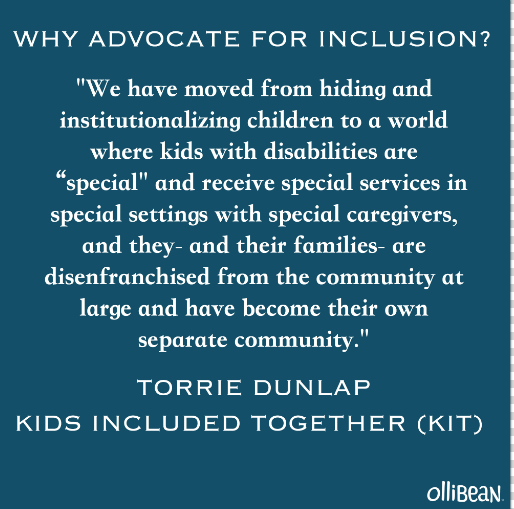
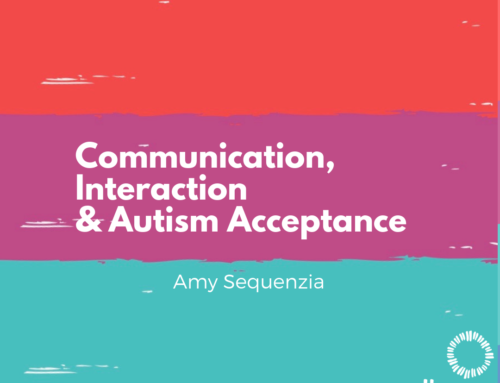
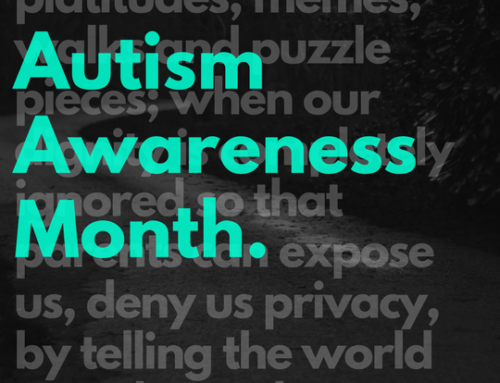

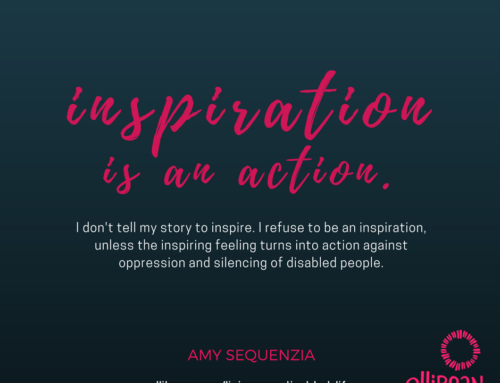
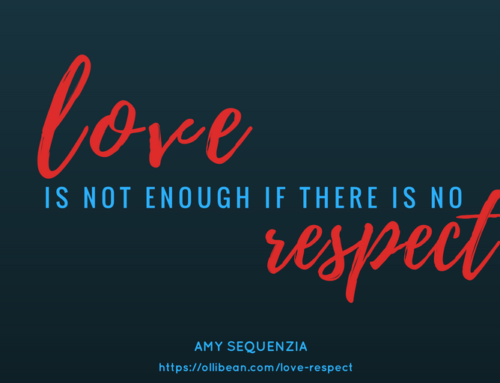
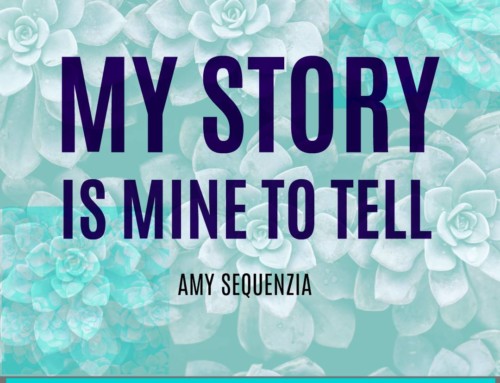
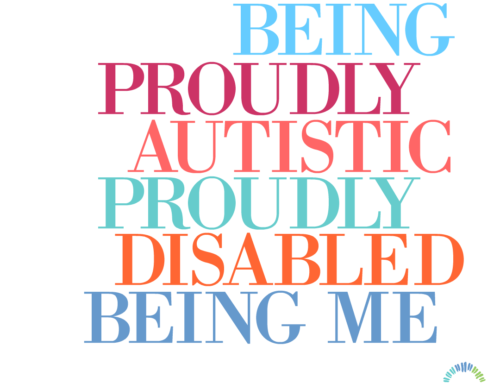
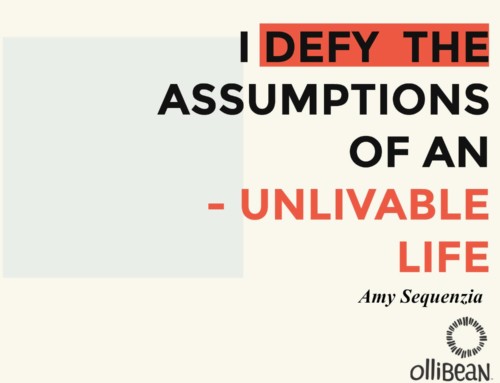
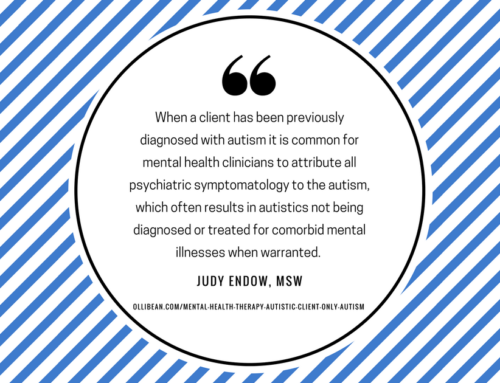


Wonderful!
This is amazing.
Right on the money!
Couldn’t agree more. Feeling separated for my child with “special needs”. Yes, he’s difficult. It’s a hard road but it teaches me more about the world, myself, love, acceptance & people every day.
Amen…and inclusion means just that….everybody gets to do the same things and gets encouraged, chastised and reprimanded just like everyone
Our daughter w/ Down syndrome has been front and center for 25 years and has encountered many forms of inclusion and segregation! Bravo for continuing along the pathway to finding the right words to use to help all to understand what a battle this has always been.
Excellent points made here. Putting human beings on the perimeter for their differences does not serve anyone. It is also good to remember that on paper, all inclusive everything sounds great. In practice, children with special needs often share many similarities with their peers with special needs and love having educational and social experiences together. The point of inclusiveness should not be to do away with special needs specific opportunities. Children with special needs often process information slowly and move slowly.They don’t always enjoy being in loud, bustling places with people talking fast and all at once. Being with peers with special needs is often in a calm setting where they can engage in conversation at a more relaxed pace or engage in physical activities going at a slower pace. As my daughter with Trisomy 21 gets older, she has chosen to socialize with her special needs peers more often. I would not want to take this beloved peer group away from her. I want my daughter to have the opportunity to be included in her school and community, but not to the exclusion of time and fellowship with her peers with special needs. Thank you for championing efforts to be inclusive.
This is so fantastic and so truthful. Thank you!
The more we begin to change our ideas about people with disabilities, the better the world will be for all people. Thank you Torrie for making it so clear. I would suggest that everyone who read the article or heard you speak should send your comments to just one person and this will make a huge difference!! Thank you for being so eloquent!! Gayle
I live with a Santa. How we deal with it is EVERY child can reach Santa, Santa is not loud, Every child is special and met as they are, and every child is treated as if this is the most important day of their life. The issue that has resulted in “Caring Santa” has nothing to do with Santa. It has everything to do with where Santa is put in the mall and how people are pushed into waiting. They have to wait in a long line in the middle of a Mall where the noise level alone will even overwhelm Santa. Inclusion for that is no trick – just move and restructure the environment, and it is better for all.
Agree totally as to what inclusion is and is not. The schools are among the worst at it, though they are mandated to use LRE. Religious groups are not very good either. I have written on this, but cannot seem to get anyone to pay attention, nice that at least there is lipservice on line.
I think, that if we made all places, our malls, events, sensory accessible as well as what everyone regularly thinks of as accessible, then we wouldn’t need “special” things like Challenged Rodeo **shudder**. I think that we can start that process by having these events, to show how easy it can be to make things accessible, and then step things up, say “hey, remember how a pain it is to have a SEPARATE event for this? Why don’t we just include it in what you usually do?”
It is, understandably, harder to do during the holidays, with Santa visits, cause omg crowds. If we could get malls to tone it down with the lights and music, it’ll help (especially since so many stores play their OWN music!!!)
I half feel like tattooing “Disability Alert” on the backs of my hands so I can hold them over my ears or eyes when it gets too much.
I love her writing. She has such a great attitude and expresses herself so well-a model for others…